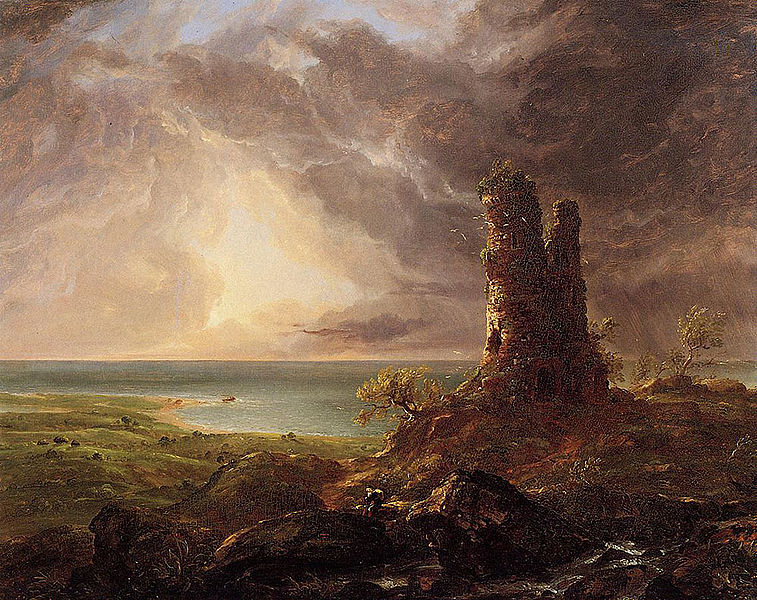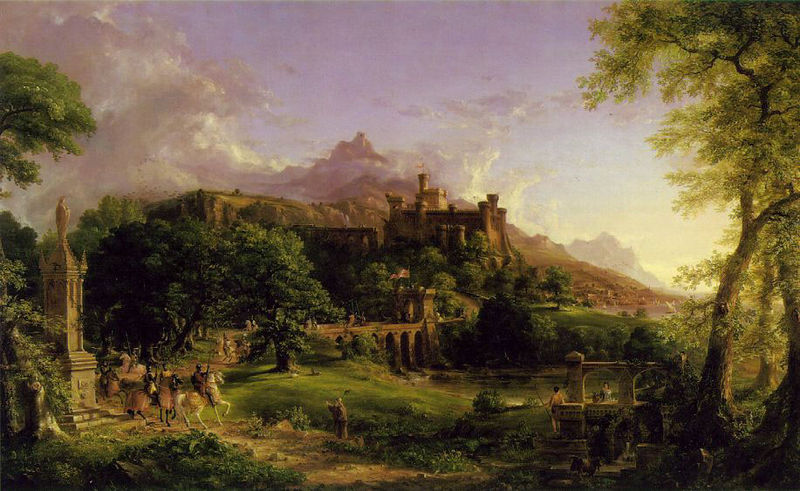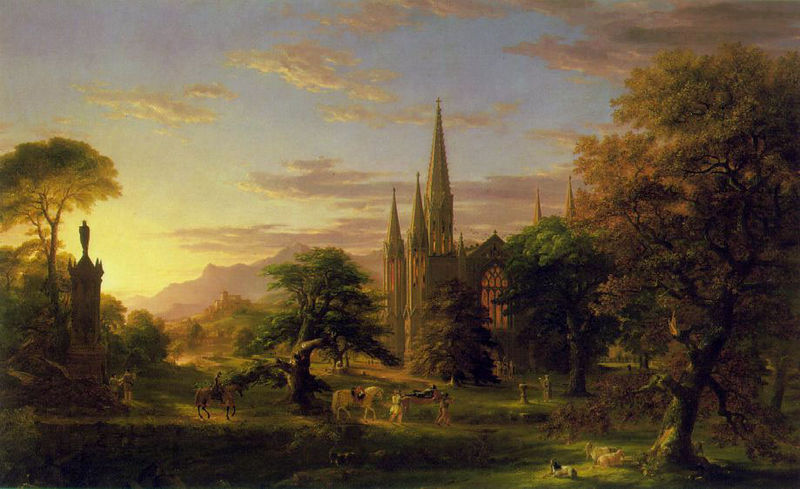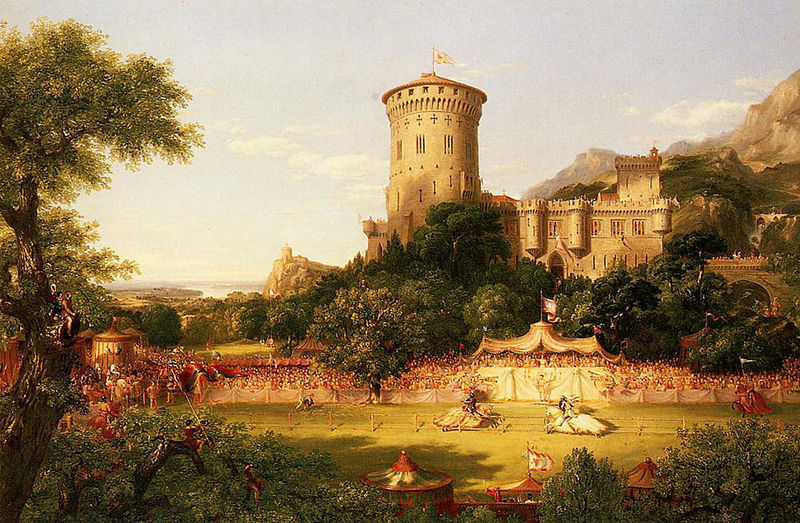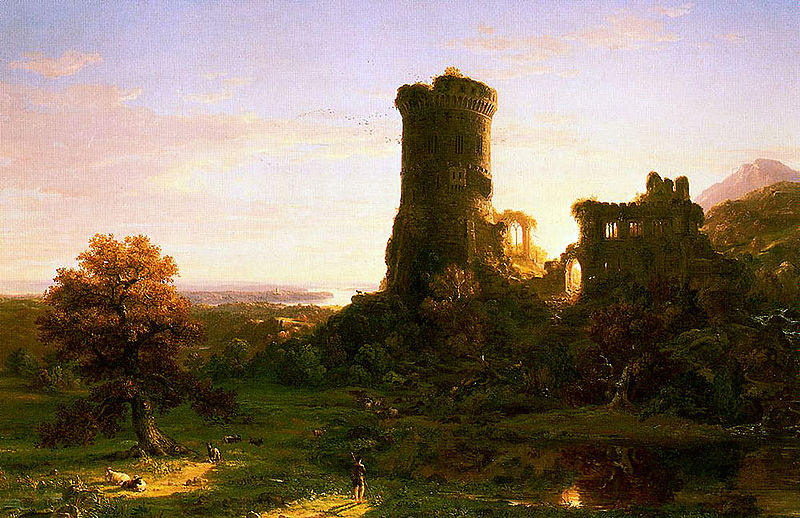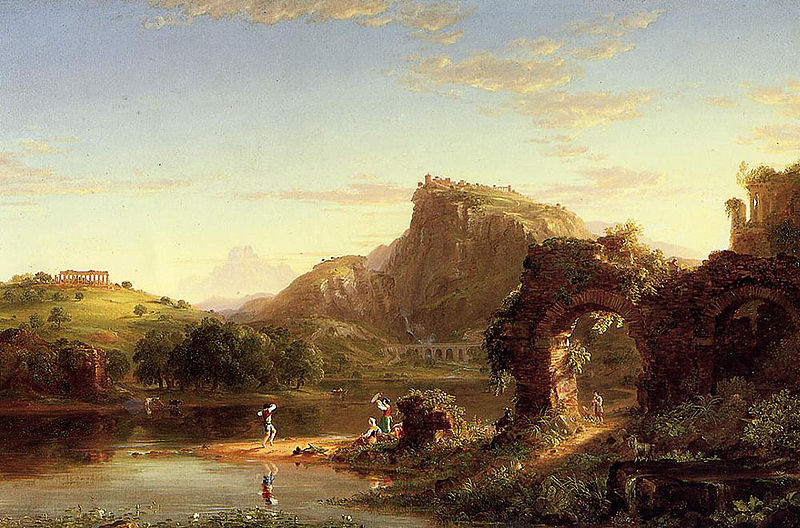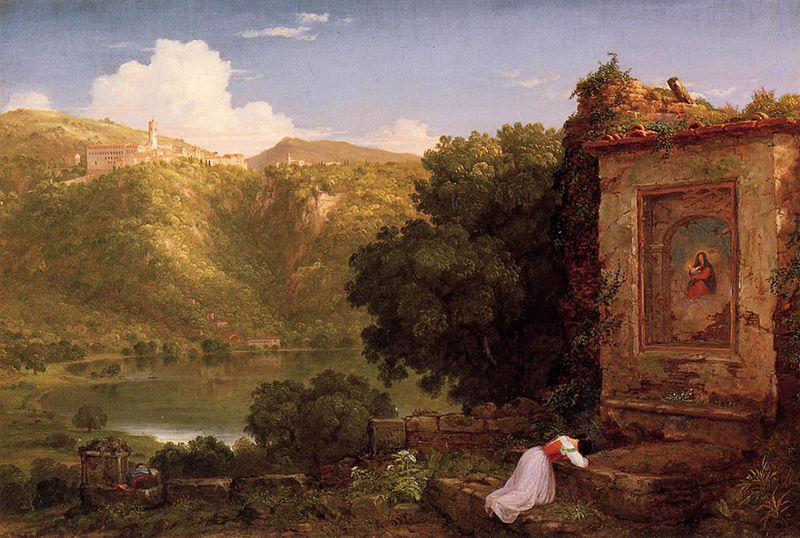<Back to Index>
- Lexicographer and Philosopher Émile Maximilien Paul Littré, 1801
- Painter Thomas Cole, 1801
- President of the Russian Federation Boris Nikolayevich Yeltsin, 1931
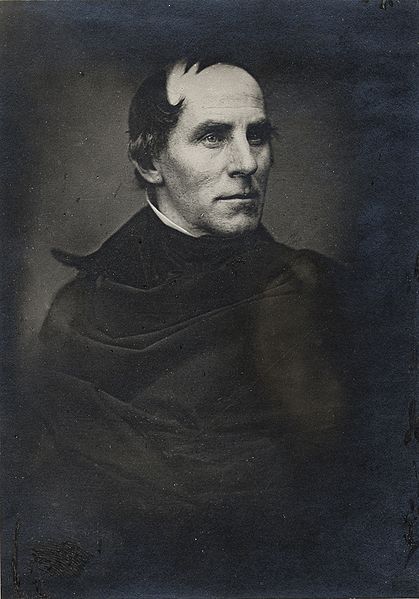
Thomas Cole (February 1, 1801 – February 11, 1848) was an English-born American artist. He is regarded as the founder of the Hudson River School, an American art movement that
flourished in the mid-19th century. Cole's Hudson River School, as well
as his own work, was known for its realistic and detailed portrayal of
American landscape and wilderness, which feature themes of romanticism and naturalism.
He was born in Bolton, Lancashire, England in 1801. In 1818 his family emmigrated to the United States, settling in Steubenville, Ohio,
where Cole learned the rudiments of his profession from a wandering
portrait painter named Stein. However, he had little success painting
portraits, and his interest shifted to landscape. Moving to Pittsburgh in 1823 and then to Philadelphia in 1824, where he drew from casts at the Pennsylvania Academy of the Fine Arts, he rejoined his parents and sister in New York City early in 1825. In New York he sold three paintings to George W. Bruen, who financed a summer trip to the Hudson Valley where he visited the Catskill Mountain House and painted the famous Kaaterskill Falls and the ruins of Fort Putnam. Returning to New York he displayed three landscapes in the window of a bookstore; according to the New York Evening Post, this garnered Cole the attention of John Trumbull, Asher B. Durand, and William Dunlap. Among the paintings was a landscape called "View of Fort Ticonderoga from Gelyna". Trumbull
was especially impressed with the work of the young artist and sought
him out, bought one of his paintings, and put him into contact with a
number of his wealthy friends including Robert Gilmor of Baltimore and Daniel Wadsworth of Hartford, who became important patrons of the artist. Cole was primarily a painter of landscapes, but he also painted allegorical works. The most famous of these are the five-part series, The Course of Empire,
which depict the same landscape over generations—from a near state of
nature to consummation of empire, and then decline and desolution—and the four-part The Voyage of Life. Cole influenced his artistic peers, especially Asher B. Durand and Frederic Edwin Church, who studied with Cole from 1844 to 1846. Cole spent the years 1829 to 1832 and 1841-1842 abroad, mainly in England and Italy. After 1827 Cole maintained a studio at the farm called Cedar Grove in the town of Catskill, New York.
He painted a significant portion of his work in this studio. In 1836 he
married Maria Bartow of Catskill, a niece of the owner, and became a
year-round resident. Thomas Cole died at Catskill on February 11, 1848. The fourth highest peak in the Catskills is named Thomas Cole Mountain in his honor. Cedar Grove, also known as the Thomas Cole House, was declared a National Historic Site in 1999 and is now open to the public.
Cole
dabbled in architecture, a not uncommon practice at the time when the
profession was not so codified. Cole was an entrant in the design
competition held in 1838 to create a new state government building in Columbus, Ohio.
His entry won third premium, and many contend that the finished
building, a composite of the first, second and third place entries,
bears a great similarity to Cole's entry.
